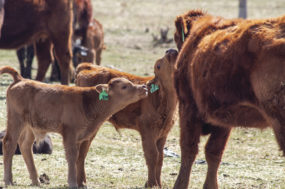At the beginning of the year, it seemed likely that beef, due to declining production, would be at a persistent relative price disadvantage to competing meats. That, for the most part, has not turned out to be the case.
Beef production, forecast to decline by almost 5.5 percent in January is now forecast to decline by not quite 4.5 percent. Beef still faces a challenge in holding market share in a competitive consumer environment, but that challenge is not quite as daunting as it appeared to be a few months ago.
Of course, the WASDE report also updated supply and use projections for grains. Projected corn ending stocks were lowered yet again in this month's report: to 1.331 billion bushels, a drop of 125 million bushels from last month reflecting an increase in export projections by a like amount.
If this projection holds, it will mark a stocks-to-use ratio of just under 10 percent – still the highest level in four years but a historically very tight carryover figure. Corn carryover is not nearly as tight as soybean carryover, though.
This month's WASDE dropped soybean carryover by 10 million bushels to 135 million bushels: a stocks-to-use ratio of just 4 percent. Clearly, we will close out the marketing year with very tight supplies of both corn and beans.
Expectations of large production this year continue to point toward increasing stocks of both crops for 2014/15; but those increased stocks have been just a year away for about three years now. As is always the case, the weather will be decisive, and at this point in the year, anything is possible. ![]()
John D. Anderson is deputy chief economist for American Farm Bureau Federation. This appeared in the In the Cattle Markets e-newsletter for Livestock Marketing Information Center.






